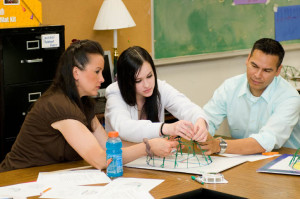Wigwametry Lessons & Presentation
The unit was designed to foster learner-based instruction while integrating culture and mathematics by identifying geometric patterns in a hemisphere. The word “wigwam” is derived from the Ojibwe term for “home” or “house.” The term “wigamig” does not necessarily refer to the domelike structure that is commonly associated with it, as some were oblong or conical, but early records describe them as crude circular shelters with little design.It was described as long ago as the early 1500’s by Giovanni de Verrazano.
“When we went farther inland, we saw their houses, which are circular in shape, about 14 to 15 paces across, made of bent saplings, they are arranged without any architectural pattern, and are covered with cleverly worked mats of straw which protect them from wind and rain. There is no doubt that if they had the skilled workmen that we have, they would erect great buildings, for the whole maritime coast if full of various blue rocks, crystals, and alabaster, and for such a purpose it has an abundance of ports and shelters for ships. They move these houses from one place to another according to the richness of the site and the season. They need only carry the straw mats, and so they have new houses made in no time at all. In each house, there lives a father with a very large family, for in some we saw 25 to 30 people.”
While difficult relationships with European “discoverers” often prevented any thorough scientific or mathematical analyses of wigwam structures, the construction process reveals the need for remarkable problem-solving strategies. Those strategies are at the heart of the Wigwametry lessons. Contextualizing problems in mathematics is a powerful and simple tool. In Wigwametry, the construction of a scale-model provides many opportunities for teachers to pose engaging problem situations that students must think through at each stage of building.

